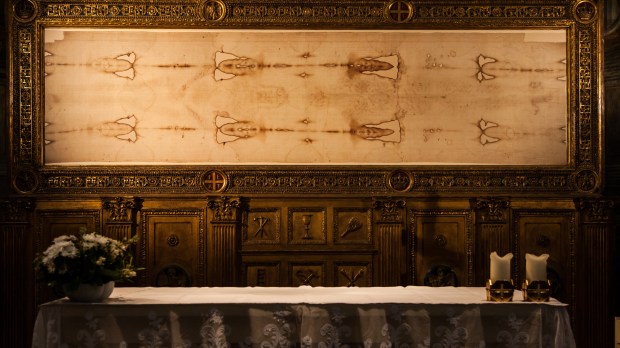A new four-year study, published in the scientific periodical Applied Optics, focuses on the Shroud, returning to the discussion of the authenticity of the Holy Shroud and questions raised by an examination of the blood conducted by Borrini and Garlaschelli. One of the objections raised concerned the color of the coagulated blood — rather than appear brown like normal coagulated blood, in the case of the Shroud, the color appears to be “too red.”
Those shades of red—explains Vatican Insider—were studied after the exposition of the Shroud in 2015, with lasers and optical instruments that also were used to determine if the image of the man has deteriorated (regarding the latter question: no).
The results: “The blood remains red if struck by ultraviolet rays of the same kind as those of sunlight,” explains Paolo Di Lazzaro, Enea researcher and vice-director of the International Center for Shroud Studies, which underwrote the study together with Inrim and Car researchers.
But, be careful—the devil is in the details—the phenomenon only happens with one particular kind of blood: “That of a person suffering from jaundice, or of someone who has been tortured.” The study was carried out on a sick person, “since we couldn’t torture anyone,” jokes Di Lazzaro. The hypothesis had already been formulated, and “we verified it, and we showed that the stains are true blood, there is ancient hemoglobin, not ochre or something else, although there are some people, such as the Cicap, who continue to say the opposite.”
“The purpose,” explains Gian Maria Zaccone, director of the Center for Shroud Studies, “was to understand the reason for the red color of the bloodstains on the Shroud of Turin, a question much debated and about which many hypotheses have been made over time; regarding these, the study has made it possible to verify to what extent some of them are well-founded.” The work was carried out “using colorimetric measurements acquired in the past using non-invasive techniques that do not require physical contact.” Without entering into technical details which “I has a historian leave to experts in the matter, we can however say that there is an ulterior experimental explanation able to justify the particular color; moreover, it is also present in many ancient findings of people whose blood presents a very high amount of bilirubin, as well as elements that make it apparent that we are dealing with ancient blood.” The article “therefore introduces further elements into the recently-raised question regarding the authenticity and the characteristics of the blood present in the Shroud’s image.”
Scientific research continues to inquire about the origin of the Shroud, but the mystery of the image of this suffering man, which has traversed the centuries, remains. It truly is the image of the suffering Christ, and it encourages believers not so much to believe in its veracity, but to engage in an ongoing and continuous conversion. The Shroud’s existence will only be meaningful if it leads us to recognize Christ in the person of Jesus.

